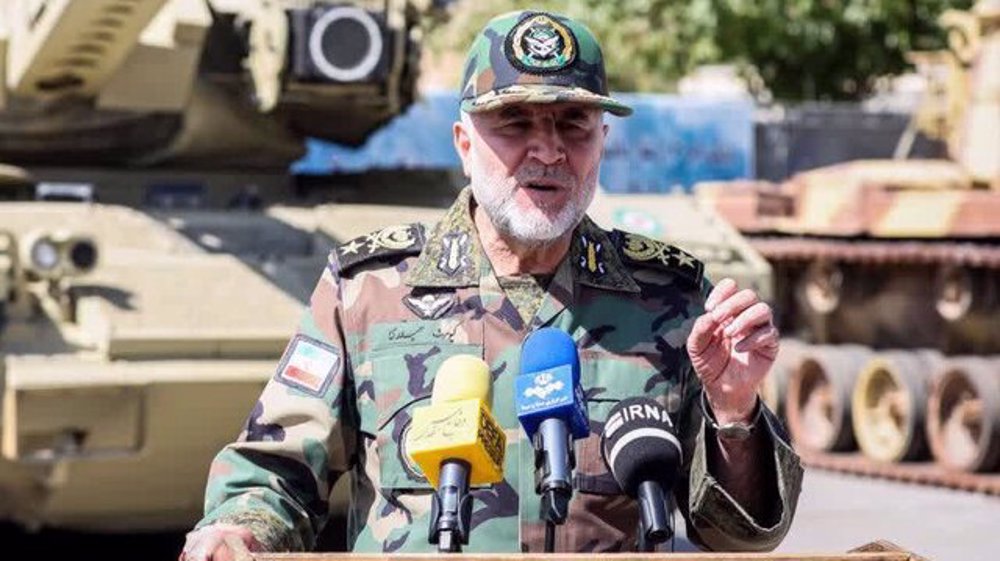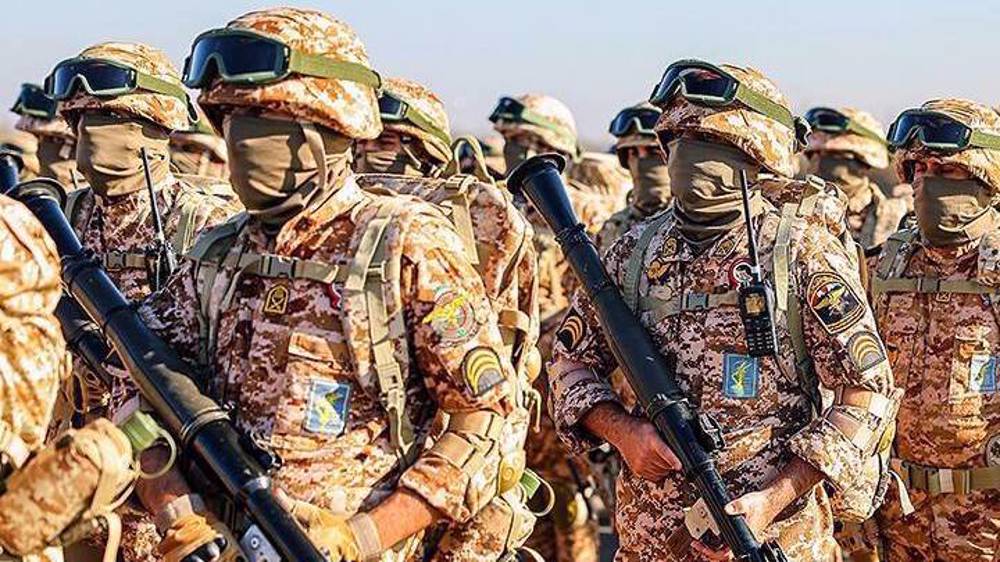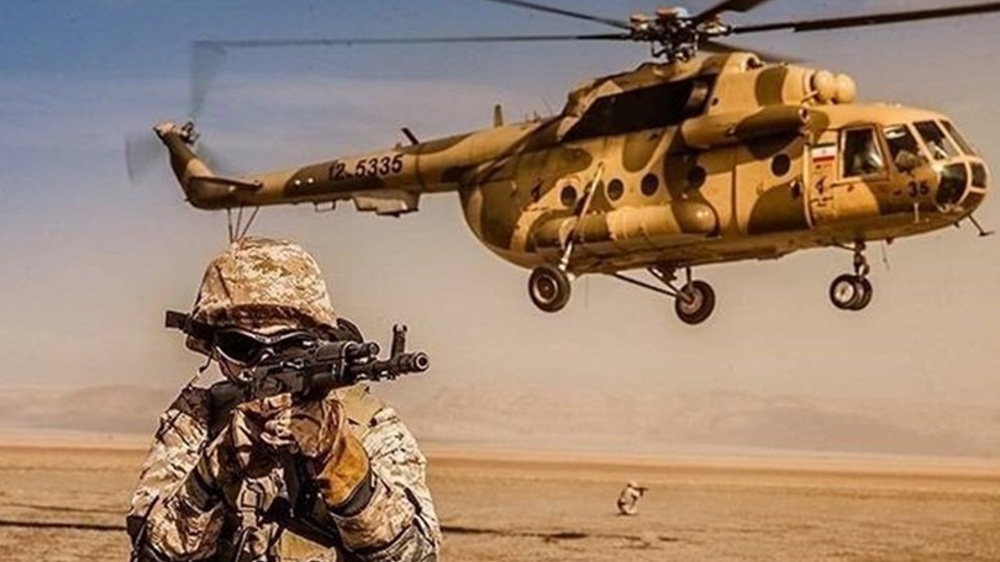IRGC wraps up major drills south of Iran
Iran's Islamic Revolution Guards Corps (IRGC) has concluded major maneuvers code-named The Great Prophet 9 in the southern Persian Gulf region.
Friday's drills involved IRGC's naval, land and airborne forces. A new strategic weapon was also tested in the exercises. The three-day maneuvers kicked off on Wednesday.
Day 2 of the drills
IRGC's ground forces held the second day of the military exercises in an area stretching from Jask to Sirik city in Iran's southern Hormozgan Province.

Seventeen units from 10 divisions of IRGC's Ground Force, including artillery, ammunition, missiles, drones, and reconnaissance jets, were involved in the second day of the drills. Six levels of operations were designed for various forces, including the IRGC’s 33rd al Mahdi Airborne Brigade. Implemented defense scenarios included the stationary defense, mobile defense, ambush, and anti-heliborne operations.
Various types of weaponry were tested with some of them being introduced for the first time.

RPH drone
The reconnaissance drone known as RPH is capable of flying both during days and nights with a maximum range of 14 kilometers. The unmanned aerial vehicle (UAV) is equipped with advanced cameras enabling it to take images of the enemy’s positions.
Jamarat
The weapon is like an engine-free cruise missile which is launched by a gyroplane. The precision of the short-range missile is about one meter and it can hit targets as far as 14 kilometers away.

Ramiat
The roadside mine is used to target armored vehicles with high precision and power. The mine is operated by a remote control and if used, it could destroy armored columns within a radius of 100 to 150 meters. The explosive is capable of penetrating up to 50cm into armor and can affect at least 100 enemy forces.
Sayyad
A bounding mine with a projectile height of 10-15 meters and is good at targeting the enemy’s copters.

Vassel
The weapon is a rocket-fired minefield sweeper which can clear an area 100 meters long and nearly two meters wide. It hugely improves the defensive capability of forces in confronting the enemy.
Khaybar
The weapon contains explosives which doubles the power of normal TNT and can be used on warheads to improve their destruction capability.
Nasir

A 12.7mm shoulder-fired weapon with six rotating barrels used to target cruise missiles. Its rate of firing is 2500-3500 rounds per minute.
Asefeh

A 23mm rotary cannon, with a firing rate of 900 to 1200 per minute used against cruise missiles and low-height drones.
Arash

The shoulder-fired weapon is a 20 mm cannon which is used by the IRGC infantry.
Armed robot
The combat robot is equipped with a 7.62 caliber machine gun, advanced optics and a thermal camera, with an effective operational range of 5-7 km.

Multi-cellular walls
The protective layer can be instantly installed to counter explosions or rocket-propelled grenades (RPGs).
Day 1 of the drills

Day one of the war game saw the IRGC's armed units engaged in various exercises, including the laying mines in the strait of Hormuz by dozens of IRGC vessels, destruction of hypothetical UAVs by 100 IRGC vessels, launching rockets at a mock-up of a United States aircraft carrier, launching Nasr Cruise missiles at the carrier by the IRGC helicopters, the successful launching of the Fateh and Zelzal missiles at fixed ground targets, launching of Khalij Fars long-range and ballistic missiles, the seizure of the repilca aircraft carrier by the IRGC Navy Special Forces, a parade by the IRGC speedboats backed by a number of Army’s F-4 fighter jets as well as cruise carrier vehicles and Shahed helicopters.
MS/NN/HMV
Yemen slams missile into northern part of occupied territories
Iran Armed Forces confront all violations against the country’s soil: Ground Forces cmdr.
IRGC deploying ‘new weaponry’ during underway Ground Force drills
VIDEO | Press TV's news headlines
Another key hospital taken out of service by Israel in north Gaza
Iran's top medical association urges ‘safe’ release of Gaza hospital’s director
Hezbollah chief: Gen. Soleimani was a leader on strategic, intellectual levels
Euro-Med warns Dr. Abu Safiya’s life in great danger due to torture










 This makes it easy to access the Press TV website
This makes it easy to access the Press TV website